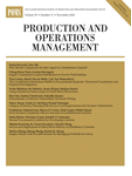 Extreme precipitation caused by global climate change is expected to have a severe impact on urbanized areas. While decision-makers struggle with climate uncertainty, an effective infrastructure adaptation strategy attaches great importance to preventing disasters resulting from rainfall. We propose a decision-making model to incorporate the probability of rainfall disasters and recommend investing time when evaluating projects related to climate adaptation. We use a hydrological statistical model and economic and technical factors to estimate the expected economic losses in several rainfall disaster scenarios, and the value of the adaptation infrastructures is calculated using a real options pricing approach. Then the decision-making model is applied to a case study involving a campus rainfall disaster prevention facility at the Central University of Finance and Economics in Beijing, China. We established three submerged scenarios with different rainfall intensities, then we evaluated the premium of holding an option to defer and pointed out the optimal investing time in each scenario. This model is expected to provide guidance for the development of adaptation infrastructure for relatively small areas such as communities and universities. And we proved that using real options-based approach could provide more managerial flexibility for investors.
Extreme precipitation caused by global climate change is expected to have a severe impact on urbanized areas. While decision-makers struggle with climate uncertainty, an effective infrastructure adaptation strategy attaches great importance to preventing disasters resulting from rainfall. We propose a decision-making model to incorporate the probability of rainfall disasters and recommend investing time when evaluating projects related to climate adaptation. We use a hydrological statistical model and economic and technical factors to estimate the expected economic losses in several rainfall disaster scenarios, and the value of the adaptation infrastructures is calculated using a real options pricing approach. Then the decision-making model is applied to a case study involving a campus rainfall disaster prevention facility at the Central University of Finance and Economics in Beijing, China. We established three submerged scenarios with different rainfall intensities, then we evaluated the premium of holding an option to defer and pointed out the optimal investing time in each scenario. This model is expected to provide guidance for the development of adaptation infrastructure for relatively small areas such as communities and universities. And we proved that using real options-based approach could provide more managerial flexibility for investors.